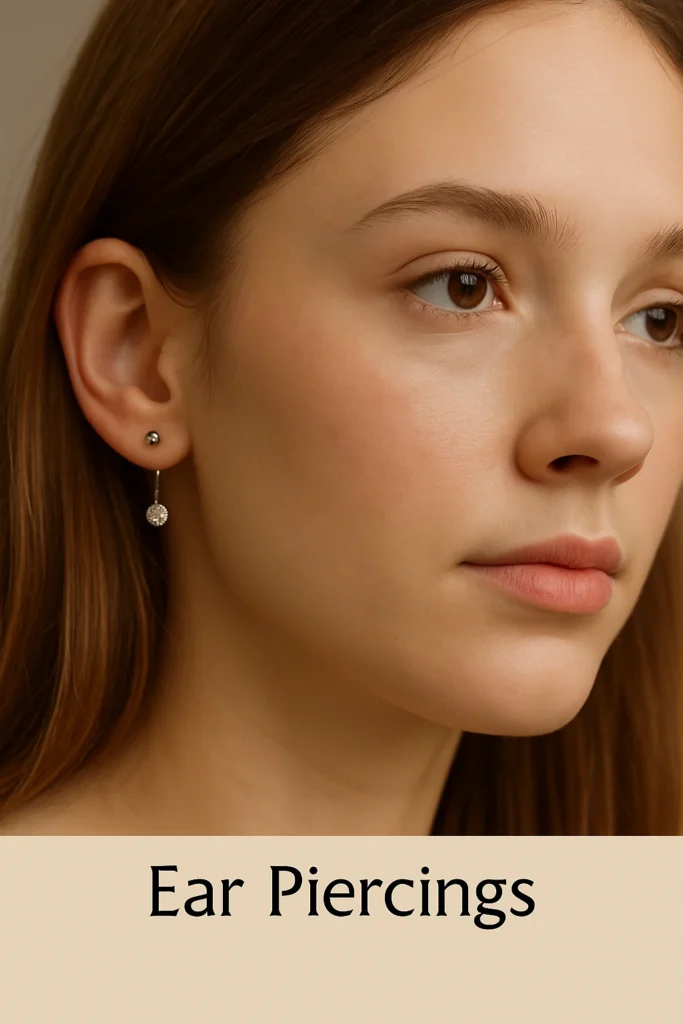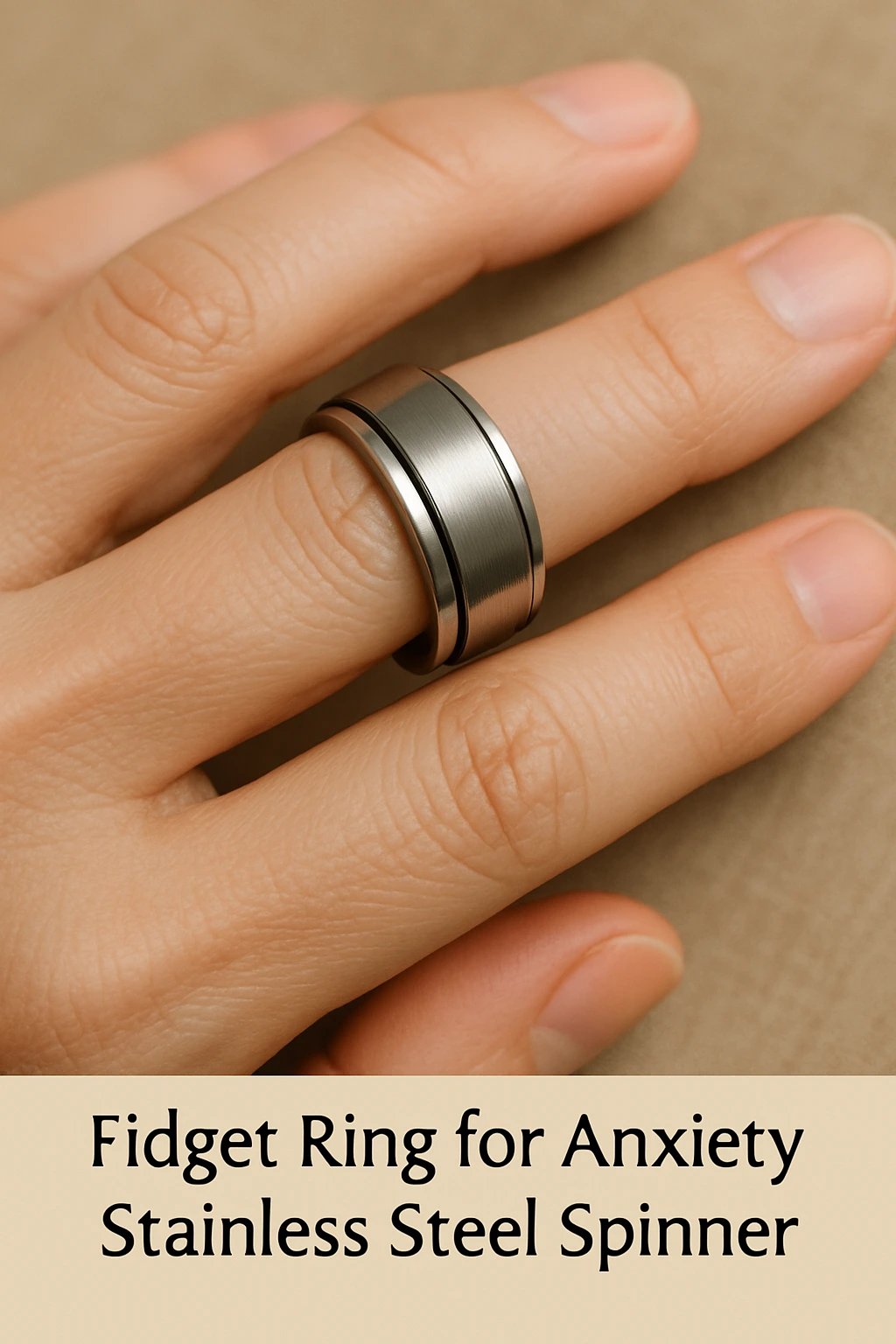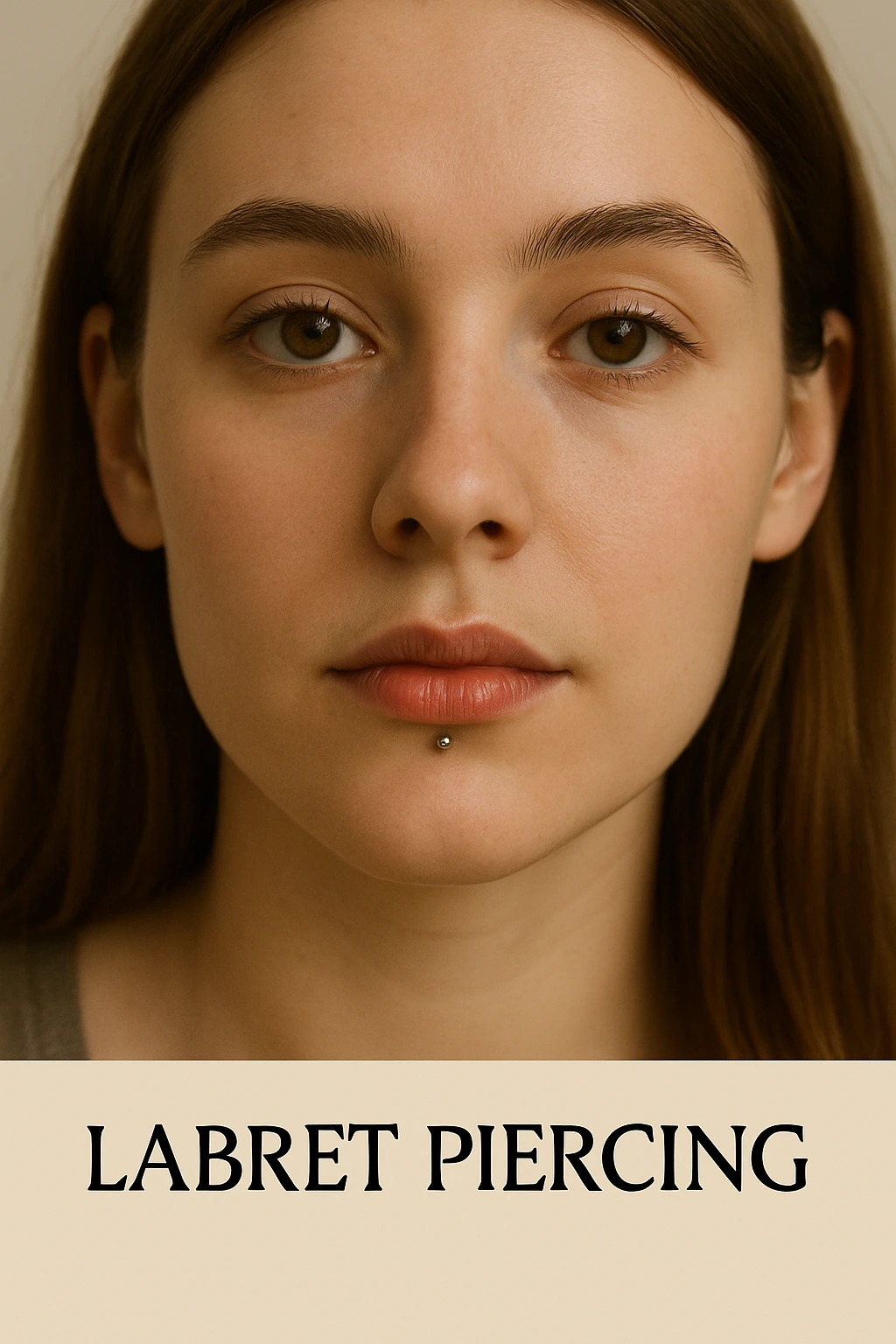Ear Piercings
Ear piercings have evolved from a simple cultural tradition to a mainstream fashion statement embraced by people of all ages. Whether you’re adorning a subtle lobe stud or experimenting with bold industrial bars, each piercing reflects a part of your personality. But getting pierced isn’t just about picking jewelry—it involves commitment, care, and awareness of both the perks and pitfalls. This guide dives deep into the types of ear piercings, jewelry styles, aftercare tips, pros, cons, and answers to the most frequently asked questions with full clarity.

Types of Ear Piercings
- Standard Lobe Piercing
The most common and traditional piercing. It’s located on the soft, fleshy bottom part of the ear. Most people get this piercing at a young age, and it’s often the starting point for those new to body modifications. - Upper Lobe Piercing
Just above the standard lobe, this one allows for a stacked look. It’s popular for people who want more than one earring but are not ready for cartilage piercings yet. - Helix Piercing
This goes through the upper outer cartilage. It’s stylish, slightly more painful than lobe piercings, and opens the door to using unique rings or barbells. - Forward Helix
Located near the face where the ear connects to the head, forward helix piercings are delicate and trendy. You can do multiple piercings in a row for a statement look. - Tragus Piercing
This small cartilage flap in front of your ear canal creates a bold appearance. It’s more challenging to pierce and heal but offers a unique aesthetic. - Daith Piercing
This piercing targets the innermost cartilage fold and has grown popular for its rumored benefits in reducing migraines. It can look subtle yet striking with the right jewelry. - Conch Piercing
Placed at the center of your ear’s cartilage, conch piercings can hold studs or large hoops, creating a standout feature on any ear. - Rook, Snug, and Industrial
These are advanced cartilage piercings for people who are comfortable with more healing time and want a standout, edgy look.
Jewelry Styles to Match Every Taste
Jewelry selection is where creativity really shines. From minimalist studs to elaborate chains, the market offers a wide range of materials and designs.
Studs are classic, suitable for all types of piercings, especially for beginners due to their comfort and safety. Hoops and huggies are versatile and can enhance the natural shape of your ear, especially in helix and daith areas. For those who want boldness, industrial barbells, ear cuffs, and chains allow a full ear curation with artistic appeal.
You can also explore options in materials like surgical steel, titanium (for sensitive skin), gold, and bioplast. The key is to choose jewelry that is hypoallergenic, comfortable, and complements your personal style.
Aftercare: The Key to a Safe Piercing Journey
Proper aftercare is essential for any piercing to heal well and avoid infections. Regardless of how simple or complex the piercing is, following a daily hygiene routine makes a big difference.
Start by cleaning your piercing twice a day using saline solution or a professional-grade aftercare spray. Avoid using alcohol or hydrogen peroxide, as they can dry out the skin and delay healing. Always wash your hands before touching or adjusting the jewelry.
Avoid sleeping on your new piercing, swimming in chlorinated water, and changing the jewelry prematurely. Cartilage piercings especially require patience—they can take 3 to 12 months to fully heal, depending on placement and body response.
Advantages of Ear Piercings
One of the biggest advantages of ear piercings is self-expression. Each piercing tells a story—whether it’s a personal milestone, fashion preference, or cultural heritage. With so many styles available, anyone can build a look that matches their personality.
Another major benefit is the versatility. Unlike tattoos, piercings are less permanent, and jewelry can be changed frequently to reflect your mood or the season. From casual studs to statement earrings, your style evolves as you do.
Lastly, ear piercings are generally low-risk when done professionally. With proper care, they heal well and offer a relatively painless and safe way to explore body art without long-term commitment.
Disadvantages of Ear Piercings
On the flip side, piercings can pose health risks if not done or cared for properly. Infections, keloids, or allergic reactions to metals can happen, especially in cartilage piercings. Unclean environments or improper techniques increase these risks.
Healing time and discomfort can be longer than expected. Cartilage piercings especially may feel tender or sore for several months. Sleeping on them can be difficult, and removing them too early can lead to complications.
There’s also a social or workplace bias in some conservative environments. While society has become more accepting, some schools or workplaces may restrict visible piercings, so it’s important to consider lifestyle compatibility.
FAQs – Answered in Detail
Do ear piercings hurt, and which one is the most painful?
Pain is subjective and depends on your personal pain tolerance, but generally, lobe piercings are the least painful and feel like a quick pinch. Cartilage piercings like the tragus, rook, and industrial are more painful due to the denser tissue. However, the pain is usually brief and manageable.
What often surprises people is the discomfort that comes after the piercing. Cartilage can stay sore for weeks or even months, especially if pressure is applied while sleeping. It’s not unbearable but requires patience. Lobe piercings typically heal quickly and without major issues.
In terms of ranking pain, most agree that industrial and snug piercings are on the higher end, while lobe and helix are milder. Always ensure you’re going to a licensed, experienced piercer to minimize both pain and complications.
How long does it take for different ear piercings to heal?
Healing time varies depending on the location and how well you follow aftercare instructions. Earlobe piercings are the quickest to heal, usually taking 6 to 8 weeks. Cartilage piercings take much longer—anywhere from 3 to 12 months, depending on your body and piercing type.
During the healing phase, your piercing might feel tender, itchy, or slightly swollen. These are normal responses as long as there’s no sign of infection. It’s important not to change or remove the jewelry before full healing to avoid reopening the wound.
To ensure smooth healing, follow a strict aftercare routine. Clean regularly, avoid sleeping on the pierced side, and resist the urge to twist or play with the jewelry. With patience and proper care, most piercings heal beautifully.
What should I do if my ear piercing gets infected?
If your piercing becomes red, swollen, painful, or starts oozing yellow or green pus, it may be infected. The first step is to keep it clean—rinse with saline solution twice a day and avoid touching it with dirty hands. Do not remove the jewelry, as this can trap the infection inside.
Applying a warm compress can help draw out pus and soothe irritation. Over-the-counter antibiotic creams are not always recommended, as they can block airflow and slow healing. Stick with saline unless a professional advises otherwise.
If symptoms persist for more than a few days or worsen, it’s crucial to seek medical help. Severe infections may require antibiotics. Remember, early treatment prevents complications and ensures your piercing stays safe and beautiful.
Can I sleep with a new ear piercing?
It’s not ideal to sleep directly on a new piercing, especially cartilage ones. Doing so can cause pressure, swelling, and prolonged healing. It may also push the jewelry into uncomfortable angles, leading to irritation or even rejection of the piercing.
For lobe piercings, using a travel pillow or donut-shaped pillow can help avoid direct contact. For cartilage piercings, side sleepers should try to train themselves to sleep on the opposite side or back during the initial months.
In general, it’s best to protect your new piercing at night by keeping it clean, avoiding friction, and using soft pillowcases. Comfort will return as the area heals, and soon you’ll be able to sleep normally again.
Is it safe to get multiple ear piercings at once?
Yes, it’s safe to get multiple piercings in one sitting, but it depends on your pain threshold and aftercare routine. Many studios offer curated ear plans where two or three piercings are done in a strategic layout. However, going beyond that in a single session may overwhelm your body’s healing ability.
Healing multiple piercings at once requires more attention. You’ll need to keep all areas clean, avoid sleeping on them, and be extra cautious with hair, headphones, or accessories that might tug or irritate the site.
If you’re new to piercings, starting slow is often better. Let one or two piercings heal before adding more. This approach ensures better healing, less stress on your immune system, and a more enjoyable experience overall.
Final Thoughts
Ear piercings are more than just fashion—they’re a personal journey. With a wide range of styles and jewelry options available, there’s something for everyone. But as with any form of body modification, it’s essential to understand the risks, care for your piercing properly, and make informed decisions.
Whether you’re decorating your ears with a minimalist touch or curating a full ear of sparkling statements, remember: patience, hygiene, and quality jewelry are the secrets to a beautiful, long-lasting piercing. Bookmark our website if you want more information PKR777Game.Com.

